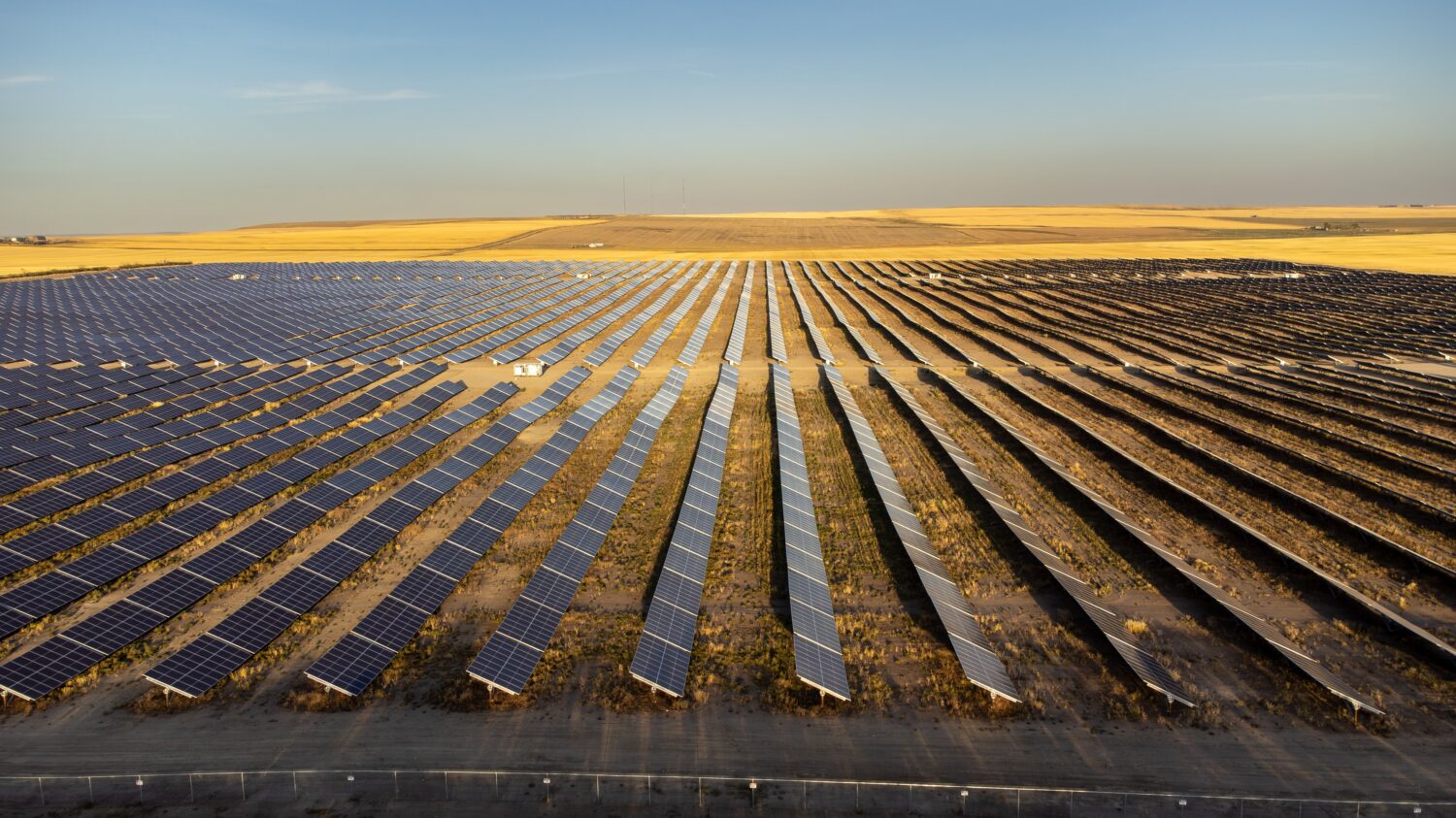Discover the Top 4 Largest Solar Farms in Canada: Are Any Near You?
Canada is making its mark in the renewable energy arena—by setting down sustainable solar stakes, so to speak, in order to build largescale solar farms. As of January 2023, Canada supported an impressive 196 key solar initiatives. This expansion is more than just digits on a page; it represents Canada’s deliberate shift to eco-conscious energy alternatives, highlighted by a stellar 13.6% surge in solar capacity during 2021. Canada’s solar proliferation stands out in certain provinces, especially along their southern edges. Though there are minor discrepancies in the exact numbers, the country’s solar installations total anywhere between 43,000 and 48,000. Regardless of the nuances, one thing is clear: Canada’s solar infrastructure landscape is in a vibrant phase of transformation.
Solar projects, regardless of their scale, play a pivotal role in Canada’s overarching blueprint for renewable energy. The core objective? Curtailing greenhouse gas emissions and spurring economic momentum in the realm of environmentally conscious energy solutions. Here, we highlight the four largest such solar energy projects, or solar farms, and where they are. Who knows, maybe a giant field of photovoltaic power generation is silently churning sunlight into electricity near you right now. The sound of its silence, the neutrality of scent—perhaps this relative invisibility is the hallmark of Canada’s clean energy present and future.
Big Solar, Mega Watts
Just as farmers orient plants in the field to maximize sunlight exposure, they position solar panels on farms considering latitude, geography, and weather. Sunlight activates the photovoltaic effect in panels, making photons hit semiconductors like silicon to generate electricity. An inverter then refines this electricity before feeding it into the grid.
Solar farms, owned by utilities, businesses, or communities, often run on power purchase agreements where businesses buy a set electricity amount. Community solar farms let multiple users co-own or subscribe to a solar initiative, earning utility bill credits for generated energy.
In essence, solar farms are pivotal in shifting to renewable energy, curtailing greenhouse gas emissions and lessening fossil fuel dependency. While you don’t have to be near a mega solar farm to participate in this cleantech cooperation, as more are sprouting across Canada, the largescale projects are taking the lead in spreading the word.

©Jeff Whyte/Shutterstock.com
Travers Solar Project, Alberta
The Travers Solar Project sits near the village of Lomond in Vulcan County, southern Alberta. Lomond, the closest significant population to this solar farm, lies a short distance from the vast Travers Reservoir.
Envisioned as the nation’s largest solar endeavor, this project encompasses an astounding 3,300 acres and will house 1.3 million solar panels. The backbone of the Travers Solar Project’s finance is the formidable investment from Copenhagen Infrastructure Partners, injecting $500 million into the venture, laying the foundation for this solar giant.
On completion, the project is slated to provide energy equivalent to power for 150,000 homes. By September 2022, even before reaching its full potential, Travers had already begun its contribution, churning out over 360 MWAC for Alberta’s electric grid. The goal is to reach 400 MWAC with an operational lifespan of over 35 years.
While electricity generation remains its core, the project also symbolizes the synergy between sustainable energy generation and economic growth. With around 750 workers converging on the site, it underscores the job opportunities and investments solar energy brings to local communities.

©StudioFI/Shutterstock.com
Brooks Solar Farm, Alberta
The solar farm lies near the city of Brooks in southern Alberta. Brooks acts as a key hub in the region and is near the Trans-Canada Highway. The farm is also relatively close to the famous Dinosaur Provincial Park, a UNESCO World Heritage site.
Brooks Solar farm stretches across a vast 68-acre plot of land. The facility supports 48,000 solar panels. With a total capacity of 17 megawatts, this solar powerhouse lights up 3,000 homes, interconnecting families and businesses with clean energy.
Highlighting its role as a pioneering project, Brooks Solar’s power production data is readily available to the public. Interested individuals and stakeholders can access live electricity generation stats on the Alberta Electricity System Operator website, promoting transparency and accountability.
Beyond its immediate power benefits, the Brooks Solar project stands as a guardian of the environment. Over its projected 30-year operational lifespan, it will cut over 400,000 tons of CO2 emissions, making a significant contribution to a greener future.
In these ways, the Brooks Solar initiative sets the stage for Alberta’s renewable ambitions.

©Jacob Boomsma/Shutterstock.com
Sol-Luce Kingston Solar PV Park, Ontario
Found in the eastern part of Ontario, the Sol-Luce Kingston Solar PV Park is located near the city of Kingston, which sits along the shores of Lake Ontario and acts as a midpoint between Toronto and Montreal. Kingston is renowned for its historic sites, including the Fort Henry National Historic Site.
With a substantial capacity of 140MW, this vast solar project produces enough clean energy to illuminate over 16,000 households annually.
CarbonFree Technology and Samsung Renewable Energy masterminded this endeavor. The electricity generated by this park feeds into Ontario’s energy grid through a 20-year power purchase agreement with Ontario Power Authority. This venture plays a pivotal role in advancing Ontario’s clean energy objectives.
A Slight Detour: Samsung Renewable Energy & Canadian Solar Partnership
The collaboration between Samsung Renewable Energy Inc. and Canadian Solar Inc. culminated in the inauguration of a state-of-the-art manufacturing facility in London, Ontario (between Toronto and Windsor). This venture has not only enhanced local employment, infusing 200 green jobs into the economy, but it also fortifies Ontario’s renewable infrastructure. (Incidentally, or perhaps not so incidentally, the Windsor and London are fast becoming Canada’s EV battery production hotspots.)
Beyond manufacturing, this facility doubles as Canadian Solar’s hub for research and innovation in solar energy generation. Samsung’s commitment to green energy in Ontario is palpable. Their aspiration to generate 300MW of pristine solar power and create 9,000 renewable energy jobs in the province signals a brighter, more sustainable future.

©Rush Photography Calgary/Shutterstock.com
Claresholm Solar Farm, Alberta
The Claresholm Solar Farm sits near the town of Claresholm in southern Alberta, strategically positioned along the major Macleod Trail highway. Claresholm is close to popular attractions like the Head-Smashed-In Buffalo Jump, a UNESCO World Heritage site. With a formidable capacity of 132MW, it’s one of Canada’s largest operating solar power entities.
Claresholm illuminates the homes of approximately 33,000 Albertans while carving out a brighter economic future for its residents. This facility has fueled the employment of over 350 full-time workers during its construction phase and is poised to infuse a whopping $35 million in property tax revenue into the local coffers. Beyond these economic ripples, the farm shores up its environmental bona fides with projections indicating an annual avoidance of roughly 149,000 metric tons of CO2 emissions.

©Jontmh/Shutterstock.com
Canada’s Solar Landscape: Prairies Shine Bright while Ontario Radiates Potential
Solar Hotspots: the Prairies Lead the Way
SaskatchewanOften bathed in sunlight, Saskatchewan boasts the highest levels of sunshine in Canada, clocking in an impressive 1330 kWh/kW/year. It’s especially the southern and eastern areas of this province that bask in the sun’s glow, making them perfect solar harvesting regions.
AlbertaTrailing closely behind Saskatchewan is Alberta, with a solar potential of 1276 kWh for every kW per year. The province’s greatest solar assets lie near its eastern border with Saskatchewan. A shining example here is the Village of Stirling, celebrated as Canada’s first net-zero village.
ManitobaThis province is hot on Alberta’s heels with a solar potential of 1272 kWh/kW/year. The southern regions of this province, home to its major population centers, are the sunniest.
Factors such as solar irradiance, influenced by a location’s latitude, play a pivotal role in defining these hotspots. While these regions lead in solar potential, Canada harnesses the sun’s power in many corners, highlighting the nation’s dedication to renewable energy.
Ontario’s Solar Spectrum
While not leading in solar potential, Ontario shines as a beacon in Canada’s solar energy domain. Averaging 1166 kWh of electricity per kW of solar panels per year, the province ranks fifth in Canada’s solar potential lineup. Cities like Toronto and Ottawa, in southern Ontario, further exemplify this potential, producing around 1,163 kWh/year and 1,199 kWh/year respectively.
A Solar PowerhouseAs of 2020, Ontario was the luminous epicenter of Canada’s solar generation, contributing to almost 96 percent of the nation’s solar power. Between 2010 and 2017, the province integrated a net 7,152 MW of renewable capacity, prominently fueled by wind and solar. By 2019, Ontario was harnessing about 97 percent of Canada’s solar capacity with an impressive 2,670 MW installed.
Ontario’s thriving solar scene is not merely a result of its geographical position. The province is also bolstered by financial incentives such as reduced upfront costs and innovative financing options, making solar installations appealing. While the province has a commendable solar track record, it’s essential to note that it still lags behind the Prairies in solar production potential. Yet, its substantial solar power generation underscores Ontario’s commitment to this sustainable energy resource.
Putting Canada’s Solar Prowess in Global Perspective
Canada’s Travers Solar Project, with its impressive 465 MWAC capacity, stands as the nation’s future largest solar farm. However, when its scale is juxtaposed with solar behemoths worldwide, the difference becomes evident.
China’s Gleaming Giant
Leading the global solar race, China’s Huanghe Hydropower Hainan Solar Park dwarfs many with its staggering 2.2 GW capacity.
India’s Sunlit Marvel
Not far behind China, India proudly showcases its Bhadla Solar Park, which boasts a substantial capacity of 2.7 GW.
United States’ Star
The Solar Star project in California, with a capacity of 579 MW, shines as the most substantial solar venture in the United States.
In the grand panoply of global solar projects, while Canada’s Travers Solar Project is a significant milestone for the country, it does not rank among the world’s most expansive solar farms. Nevertheless, its contribution to Canada’s renewable energy landscape is undeniably valuable.

©Kritsana Maimeetook 81/Shutterstock.com
What Makes a Solar Farm Tick?
Solar farms are expansive installations of photovoltaic (PV) panels that harness sunlight, converting it into electricity. Differing from rooftop solar systems, these arrays are primarily ground-mounted, spread over vast tracts of land. They can be utility-scale, funneling electricity directly into the grid, or tailored for community-scale, lighting up smaller settlements.
How do they work? Solar panels in these farms are meticulously oriented to catch the most sunlight, factoring in geographical and meteorological variables. When sunlight bathes the panels, the photovoltaic effect triggers a fascinating chain reaction. Photons hit the semi-conductor surface, ejecting electrons and creating an electric current. This raw power is refined by an inverter into usable electricity and dispatched into the grid.
Solar farms could have varied proprietors: utility behemoths, corporate entities, or community co-operatives. Often, they work on power purchase agreements, with entities committing to buy a certain quantum of electricity. An interesting offshoot is the community solar farm, also dubbed a “solar garden”, allowing several users to share stakes in a local solar project and earn utility bill credits for the generated energy.
Advantages of Solar Farms
Endless Energy: Sunlight is an inexhaustible source of renewable energy.
Eco-friendly Power: Solar farms generate clean, pollution-free energy.
Versatile Application: Solar energy has a plethora of applications, from electrification to heating.
Minimal Upkeep: Post-installation, solar panels demand little maintenance.
Reduced Reliance on Fossil Fuels: Solar energy curtails the need for finite fossil fuels.
Disadvantages of Solar Farms
Steep Initial Costs: Solar farms require substantial initial investments, though costs are on the decline, way on the decline.
Weather Reliance: Solar production hinges on meteorological conditions.
Storage Issues: Storing surplus solar energy can be a financial burden.
Land Intensive: Solar farms require large plots of land for significant electricity production.
Pollution in Production: The creation of solar panels can have associated pollution, especially in the manufacturing phase.
Comparative Analysis
Advantages: Solar energy, being universally available, is a versatile energy source. Moreover, it’s a clean energy source that can mitigate the use of limited fossil fuels.
Disadvantages: Solar energy’s efficacy is at the mercy of weather conditions, and expansive solar farms demand large tracts of land. Luckily, Canada is not lacking in surface area. While the setup costs are dropping like the sun in the West, storage of surplus energy remains a challenge.
Essentially, solar farms signal a promising move to renewable energy, but they have their own challenges and limitations. Still, we can’t underestimate their role in combating global warming and shifting away from fossil fuels.
Conclusion
The Kardashev Scale, envisioned by Soviet astronomer Nikolai Kardashev in 1964, gauges the energy capability of civilizations. Initially aimed at assessing the energy footprint of hypothetical alien societies, it posited that higher energy capacity could yield stronger transmissions, rendering such civilizations detectable from afar. Although Earth didn’t make the cut in Kardashev’s original scale, Carl Sagan’s adjustment places us at a modest 0.72.
In essence, a Type 1 civilization, something we are inching towards, can harness almost the full extent of solar energy hitting its surface. Ascending the Kardashev ladder, each tier exemplifies a quantum leap in energy mastery: a Type 2 civilization extracts energy directly from its sun, while a Type 3 reigns over the energy of its entire galaxy.
This framework dovetails with the burgeoning discourse around solar farms and the imperative shift to renewable energy. We climb the Kardashev Scale thanks to our creativity in tapping into energy resources like the sun. And doing so sustainably.
Reflecting on Canada’s foray into solar energy, the country’s earnest endeavors to amplify its energy stature are laudable. The journey may appear gradual, yet each solar panel, each solar farm, propels us towards a brighter, more sustainable spin of society. The objective transcends the electro-horse race of advancement on the Kardashev Scale; it embodies a commitment to fostering a thriving planet.
Summary Tables
Canada’s Largest Solar Farms
| Solar Farm | Location | Generating Capacity | Number of Solar Panels |
|---|---|---|---|
| Travers Solar Project | Near Lomond in Vulcan County, Albert, close to the Travers Reservoir. | 465 MWAC; producing over 360 MWAC as of September 2022 | About 1.3 million panels over 3,330 acres. |
| Brooks Solar Farm | Near Brooks, Alberta, close to Dinosaur Provincial Park. | Current capacity of 17 MW; proposed expansion to 400 MW. | 48,000 high-efficiency modules. |
| Sol-Luce Kingston Solar PV Park | Kingston, Ontario, between Toronto and Montreal by Lake Ontario. | 140 MW. | 464,500 modules. |
| Claresholm Solar Farm | Claresholm, Alberta, along the Macleod Trail near Head-Smashed-In Buffalo Jump. | 132 MW. | Not specified. |
Advantages and Disadvantages of Solar
| Advantage | Description |
|---|---|
| Endless Energy | Sunlight is a renewable energy source that won’t run out. |
| Eco-friendly Power | Produces clean, pollution-free energy. |
| Versatile Application | Has a wide range of uses, from electrification to heating. |
| Minimal Upkeep | Requires minimal maintenance after installation. |
| Reduced Reliance on Fossil Fuels | Decreases the dependency on finite fossil fuels. |
| Disadvantage | Description |
|---|---|
| Steep Initial Costs | Requires large upfront investments, but costs are rapidly decreasing. |
| Weather Reliance | Solar energy production is dependent on weather conditions. |
| Storage Issues | Financial challenges arise when storing surplus energy. |
| Land Intensive | Requires substantial land for significant electricity generation. |
| Pollution in Production | Manufacturing solar panels can lead to environmental pollution. |
Comparative Analysis
Advantages: Solar energy, accessible everywhere, is versatile and green, presenting an alternative to dwindling fossil fuels.
Disadvantages: The sun’s reliability can be shadowed by weather changes, and vast solar installations consume generous land portions. But, as expansive as the Canadian horizon, land isn’t in short supply. Although the sun sets on setup costs, energy storage still casts a shadow.









